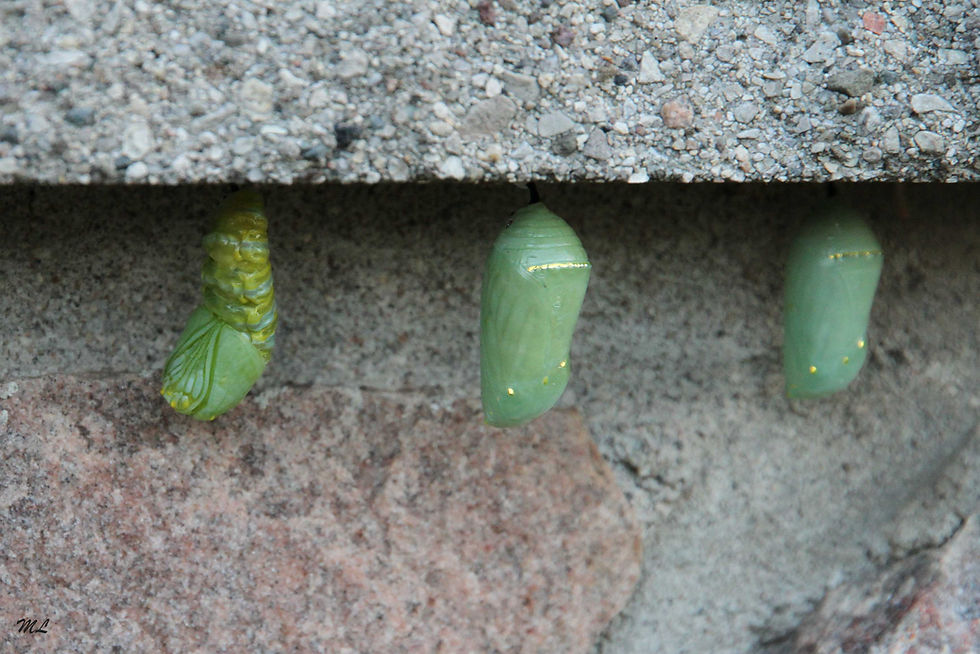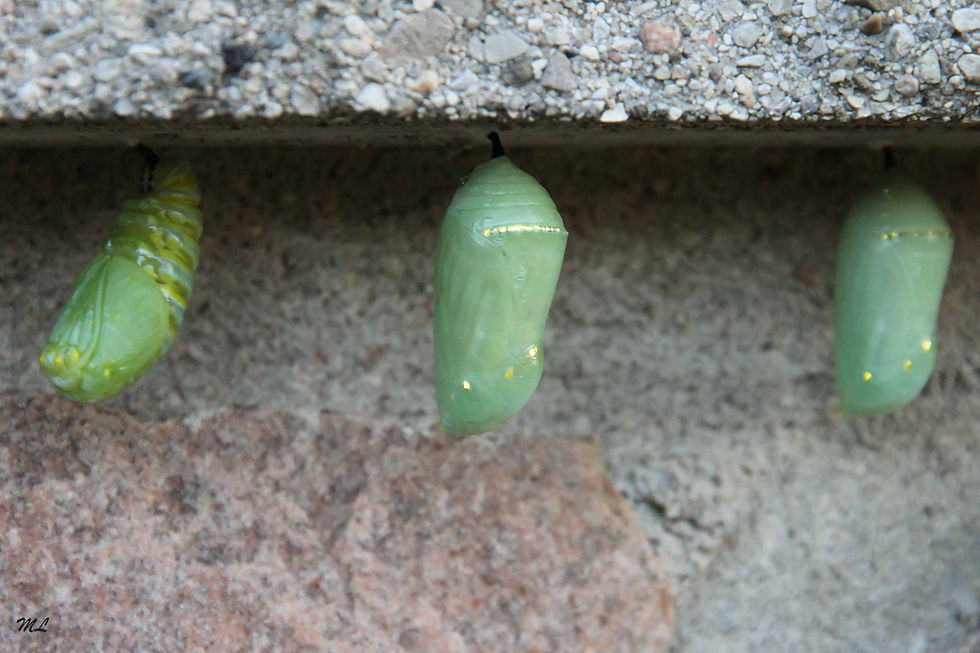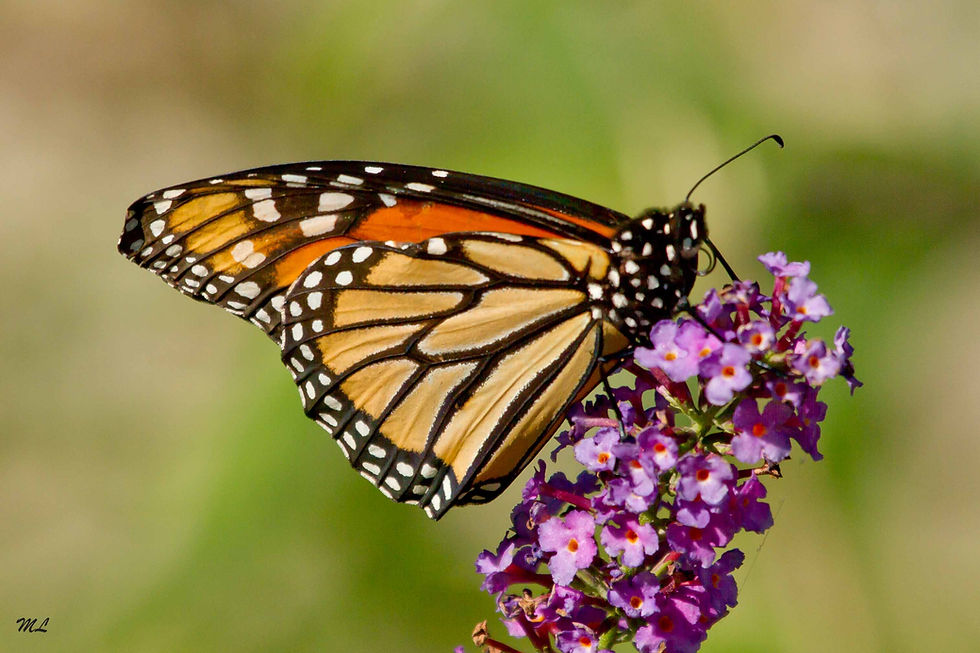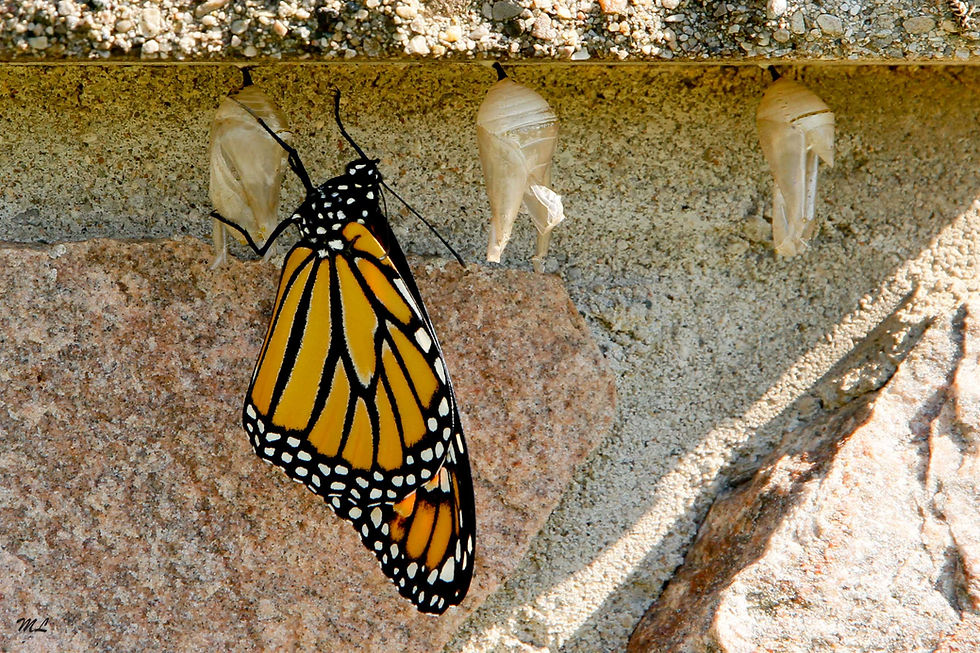Monarch Metamorphosis
- Merri-Lee M.
- Oct 2, 2016
- 3 min read
Monarch butterflies were scarce this summer. We saw the odd one fluttering around, but a nasty storm in March, in the wintering grounds in Mexico, seems to have taken its toll on the Monarch population. For the first part of the summer, during the heat and drought, there were very few butterflies of any species. The rains, when they came, were welcomed by all living creatures (humans included!), and as the flowers finally blossomed, butterflies arrived in greater numbers.

A few years ago, a friend gave me some Prairie Red Milkweed seed. Those tiny seeds have grown into clumps of plants that are 5-6 feet tall, and have proven to be very attractive to Monarchs. The blooms are fragrant and long-lasting, the leaves are an excellent source of food for the hungry caterpillars, and seedlings from the original plants hosted Monarch larvae well into September. Although I have several Common Milkweed plants growing in the same area, the Monarchs usually chose to lay eggs on the Prairie Red Milkweed.

Once the caterpillars hatched, they wasted no time in making leaves disappear. There were as many as nine caterpillars on one clump of Milkweed in August.....

Within days of hatching, the striped larvae were plump and well-fed, and could often be located by looking for the large number of droppings on leaves underneath the ones that they had chosen to eat!
Caterpillars on Common Milkweed and Prairie Red Milkweed:


Once they were fully developed, the caterpillars chose a spot under a leaf or a ledge or a windowsill, and attached themselves with a strong glue-like substance. They hung for a day or two in a "J" and then began to shed their skin and enter the chrysalis stage.


One of our front windowsills was home to three chrysalises. They were surprisingly close to one another. The one on the left is wiggling its way into chrysalis form; the other two are hanging quietly in the sun, completely formed with gold trim and a small black line.



After about two weeks (this time varied during the heat of the summer by several days), the chrysalises began to darken, then to become almost transparent, and the orange and black butterflies became visible. No more yellow-and-black-and-white-striped caterpillar........


The Monarch butterfly emerged within minutes once the process had begun, and the insect appeared, crushed and crumpled. However, within an hour or so, the wings straightened as fluid was pumped into them, and the butterfly opened and closed its wings to dry them and to prepare for flight. The proboscis extended and curled in preparation for feeding, and legs were tested as the new Monarch climbed away from the chrysalis case.



At one point in the summer, caterpillars seemed to be disappearing from the Milkweed, and House Sparrows were flying in and out of the plants. Concerned for the larvae, I brought several up to the porch, and placed them in jars with fresh leaves (daily). All of them formed chrysalises on the mesh tops of their jars, which were then transferred to a piece of wood. One morning in late August, I stepped out onto the porch, and was thrilled to see that eight Monarch butterflies had emerged, and were hanging in a row. Another one appeared about an hour later for a grand total of nine in one morning!


Within an hour or two, all of the new Monarchs had flown. At first they fluttered a bit, and landed on a nearby flower or tree where they opened and closed their wings. Soon they left the safety of their plants, and flew high and away, around the house and out the lane, often stopping on the way for a snack on the Butterfly Bush.



And here is the last little Monarch Butterfly of the "three-in-a-row" to emerge.

There were at least thirty Monarch caterpillars that became butterflies around the house this season. I have left the fragile-looking, empty chrysalises hanging in the "transformation spots" chosen by caterpillars as a reminder of the Monarch miracles of the summer of 2016!





Comments